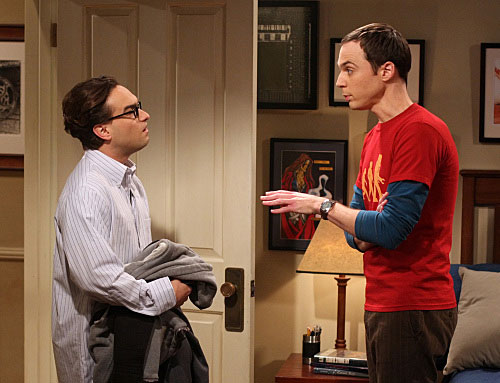 Darcy Pern shares a bed with her mother Sarah in a one-room flat on the title island in Anna North’s America Pacifica, an attempt to recreate American culture after the glaciers cover North America. The money doesn’t always cover food, and they can seldom afford new shoes. Sure, it’s squalid, but Sarah’s devotion makes it the only home Darcy knows. So when Sarah doesn’t come home one evening, Darcy chucks everything to find her mother.
Darcy Pern shares a bed with her mother Sarah in a one-room flat on the title island in Anna North’s America Pacifica, an attempt to recreate American culture after the glaciers cover North America. The money doesn’t always cover food, and they can seldom afford new shoes. Sure, it’s squalid, but Sarah’s devotion makes it the only home Darcy knows. So when Sarah doesn’t come home one evening, Darcy chucks everything to find her mother.But first she finds decay and corruption so severe that her flat looks palatial. While the island’s first families eat steak and rule the roost, those who reached the island on the last few rafts build shanties and cook seaweed on hibachis. And, to Darcy’s alarm, it looks like Sarah took part in founding the island’s corrupt system. That makes her a tempting ally when a last-boat survivor organizes a rebellion.
This book’s most frustrating trait is how good it almost appears. Its promising premise and urgent conflict read like the first draft of something auspicious. But North dedicates pages and pages to rococo science and narrative angst. Our heroine feels like someone auditioning to play an emo girl. And once North reaches a fitting climax, instead of pitching a rewarding denouement, she starts a whole new story thread, thirty pages from the end.
 Perhaps, for a fulfilling apocalypse, we should ask people who actually believe in the Apocalypse. People like theologian Leonard Sweet and teacher Lori Wagner, authors of The Seraph Seal. Surely Christians could end the world with a bang. Yet this attempt at liberal/progressive radical inclusivity feels, if anything, even less satisfying. It seems strange to say about a book running over 500 pages, but this reads like an outline.
Perhaps, for a fulfilling apocalypse, we should ask people who actually believe in the Apocalypse. People like theologian Leonard Sweet and teacher Lori Wagner, authors of The Seraph Seal. Surely Christians could end the world with a bang. Yet this attempt at liberal/progressive radical inclusivity feels, if anything, even less satisfying. It seems strange to say about a book running over 500 pages, but this reads like an outline.President Matthew Serafino and historian Paul Binder share a birthday, and a final destiny. When a British philologist invites Binder to investigate a rare early Christian manuscript, Binder discovers his place in ancient prophecy, and reclaims his ageless Christian heritage. But Serafino uses global power politics to his advantage, amassing a new kind of power that means more as the sky turns blood red and the seas turn swampy black.
Lutheran theologian Barbara Rossing demonstrates how LaHaye and Jenkins use gripping storytelling to slip shoddy theology under our noses. Sweet and Wagner presumably want the same for their postmodern exegesis. But not only do they display laissez-faire spirituality, they don’t tell much of a story. It’s sweeping and synoptic, dependent on far more coincidences than readers would accept if God weren’t involved.
Eschatology looms in human myth. When societies stopped believing God would end humanity, we created weapons and diseases to take God’s place. Clear back in 1943, George Orwell claimed that Christianity was diminishing because fewer people felt we could really live forever. If anything, that makes end-times literature more important, not less, and writers must show greater respect.
 That’s why I like China Miéville’s Embassytown. Unlike these others, this book knows what “world” means, and what “end” means. It doesn’t mean destruction, blood, and abstract vindication—although it can mean these things. But Miéville knows worlds end when our assumptions prove mistaken. Worlds end when we change how we see them, and how we see ourselves.
That’s why I like China Miéville’s Embassytown. Unlike these others, this book knows what “world” means, and what “end” means. It doesn’t mean destruction, blood, and abstract vindication—although it can mean these things. But Miéville knows worlds end when our assumptions prove mistaken. Worlds end when we change how we see them, and how we see ourselves.On the edge of Immerser Space, humans establish an embassy to the Ariekei, a species that thinks like nothing we've encountered before. Professional space traveller Avice Benner Cho returns to her homeworld among the Ariekei in time to see them fall before a human scheme that renders them defenseless. But when the Ariekei won’t admit defeat, Avice realizes she's witnessing the end of her world. The time comes to choose sides.
Despite a slow start, this novel proves most adept at demonstrating what happens when everything we hold inviolable collapses. Its characters confront profound frustration, nihilistic gloom, and chaos before emerging renewed across the chasm. Despite his secular inclinations, Miéville has crafted an essentially religious narrative, proven by his frequent theological terminology: prelapsarian, diaspora, teleology. The Fall.
Perhaps Miéville alone understands that the world doesn’t stop when it ends. And neither do we. That makes his secular scripture uniquely satisfying among publishers’ recent tedious apocalypses.

 In 2007,
In 2007,  Notably, each male lead is defined by some deep maternal conflict. Sheldon’s mother affects religiosity that defies his own empiricism, while Leonard’s mother displays starchy detachment against his need for acceptance. Similarly, Howard’s mother infantilizes the son who considers himself quite the Romeo, while Raj’s domineering mother probably influences his muteness around women his own age.
Notably, each male lead is defined by some deep maternal conflict. Sheldon’s mother affects religiosity that defies his own empiricism, while Leonard’s mother displays starchy detachment against his need for acceptance. Similarly, Howard’s mother infantilizes the son who considers himself quite the Romeo, while Raj’s domineering mother probably influences his muteness around women his own age.



 What, then, is freedom? Leonard wants freedom to be liked by others. But when he achieves that, he finds it unsatisfying. In Season 3, Episode 6, “The Cornhusker Vortex,” Leonard tries to join his sweetheart Penny in watching football. But he finds it ultimately frustrating and flees to join his friends. Unfortunately, Leonard doesn’t just want others to like him, he wants others to like him as he is. He cannot stop being Leonard, but he wants to be liked as Leonard, which proves not only frustrating, but the opposite of liberating.
What, then, is freedom? Leonard wants freedom to be liked by others. But when he achieves that, he finds it unsatisfying. In Season 3, Episode 6, “The Cornhusker Vortex,” Leonard tries to join his sweetheart Penny in watching football. But he finds it ultimately frustrating and flees to join his friends. Unfortunately, Leonard doesn’t just want others to like him, he wants others to like him as he is. He cannot stop being Leonard, but he wants to be liked as Leonard, which proves not only frustrating, but the opposite of liberating.














